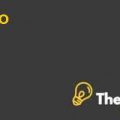NESTLE SA: NUTRITION HEALTH AND WELLNESS STRATEGY Case Study Solution
Problem Diagnosis
Nestle SA’s strategy is based on several fundamental principles such as renovation and innovation of the existing products of the company and developing new products for the company. The management of the company had committed itself to become the leading nutrition, health and wellness company in the world in 1997.
Over the next 13 years, all the decisions were guided by the nutrition, health and wellness strategy of the company and decisions such as improvement of products, acquisition choices, mergers and packaging innovations were made in light of this strategy. Through its nutrition, health and wellness, Nestle had built huge credibility with the customers, differentiated the firm and profit margins for the company were raised. However, the sales of the company had reduced more in 2010 as compared to the target level.
Therefore, the main problem or challenge faced by Nestle SA in 2010 is what steps to take or which strategies to implement to increase the sales of the company over the next couple of the years. Sales in 2010 had only increased by 6.2% as compared to the target of 10% and the operating margin of the Nestle Nutrition Unit had been 19% as compared to the target of 20%. The long-term goal for the company was to become the leading nutrition, health and Wellness Company and to survive in the changing market and market dynamics. In this report, we attempt to determine the strategic challenges faced by Nestle SA and then devise specific strategic recommendations for the company using core course concepts.
Analysis
We begin the analysis of the case by first applying the Porter’s Five Forces model to examine the industry in which Nestle SA operates. The aim here is to determine the industrial challenges faced by the company in pursuing its goal of becoming the nutrition, health and wellness company.
Porters Five Forces Model
Supplier Power: The power of the suppliers in the food and beverage industry is medium to high however; this power is low for Nestle SA because of the acquisitions and extensive vertical integration by the company.
Buyer Power:The power of the buyers for Nestle and most of the other food companies has been kept low as the number of the buyers is huge and they cannot credibly threaten to integrate forward and assume the business of these huge companies
Threat of New Entrants: Although, the food and beverage industry is analogues to the commodity businesses, the threat of new entrants is kept low because of the demand side benefits of scale, supply side economies of scale, incumbency advantages of Nestle, capital requirements and unequal access to the distribution channels.
Threat of Substitutes:It is almost impossible to name a beverage or a food product that does not have any substitute in the market therefore, this threat is high.
Competitive Rivalry: The number of large competitors that have established their brand name in the industry is low and thus the intensity of the rivalry in the industry is intense.
Next, we analyze the internal and the external environment of Nestle SA by implementing the SWOT model and using the course concepts. This will highlight a number of internal and external challenges faced by Nestle SA.
SWOT Model
Strengths
Nestle is recognized as one of the powerful food producing companies that employs over 280,000 people. The company remains competitive by having an upper hand on competition through its low cost products and low cost operators. The R&D has given a huge strength to the company in the field of product development, innovation and renovation. The model of the company closely resembles to the model of pharmaceutical companies with all the regulatory approvals, trials, core technologies and various projects with different phases. By the end of 2007, the company had become a leader of world in terms of infant nutrition, baby food, infant formula and science based performance nutrition.
NESTLE SA NUTRITION, HEALTH AND WELLNESS STRATEGY Harvard Case Solution & Analysis
Weaknesses
The diversification portfolio of the firm has become enormous and it makes it impossible to run each division smoothly. Despite a strong initiative for nutrition, health and wellness, the company had missed targets in 2010 that had been set in the year 2006. According to Bulcke, the company was now looking forward to personalize nutrition problems and address them at individual level and find answers to the chronic diseases, however, this view has been deviating the company from providing healthy and nutrient food to its customers.........................
This is just a sample partial work. Please place the order on the website to get your own originally done case solution.









